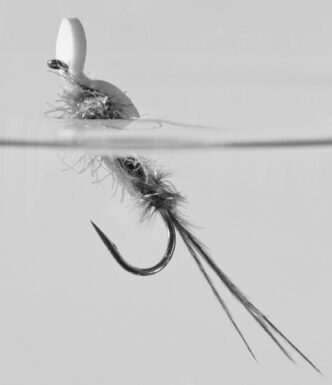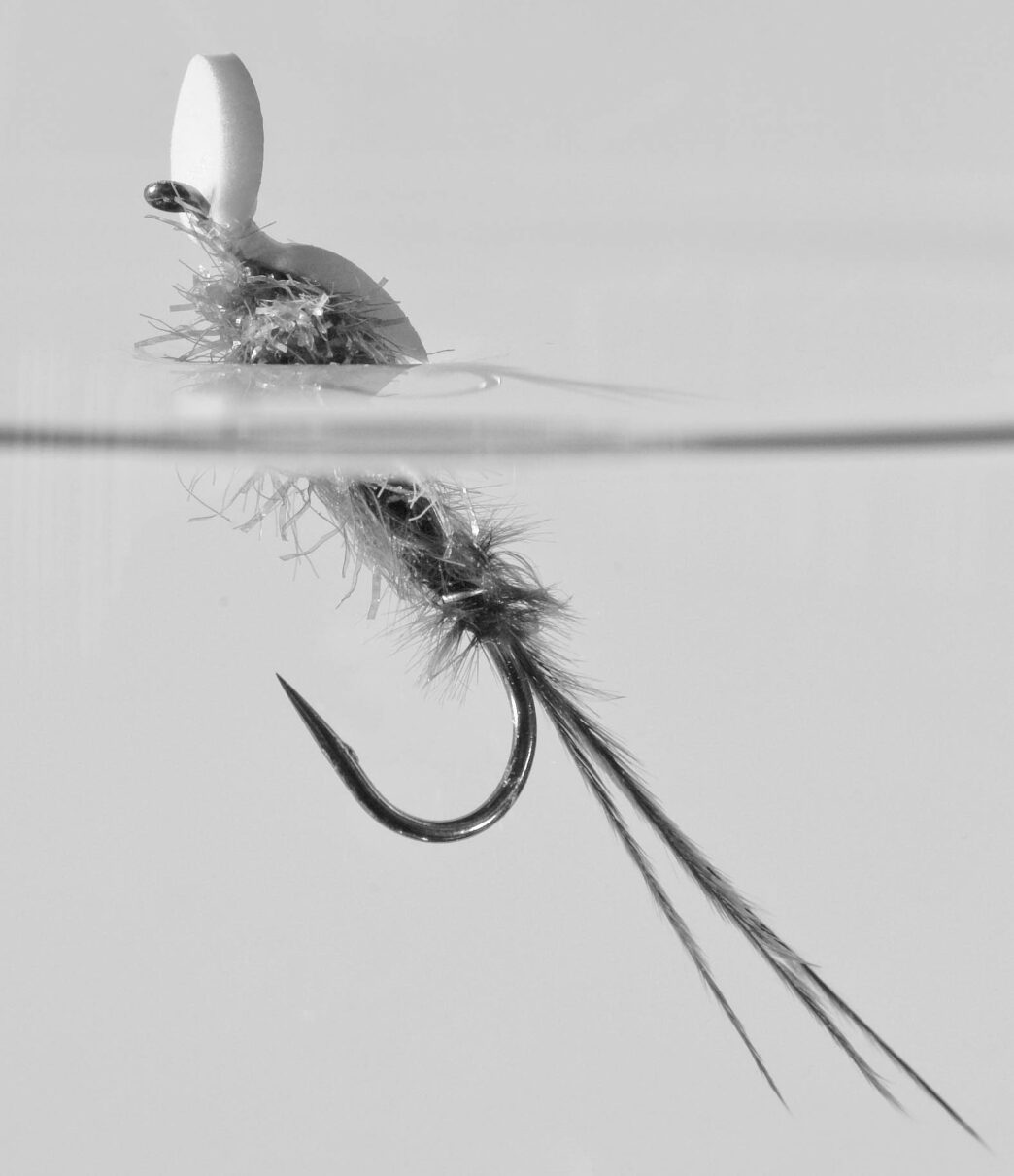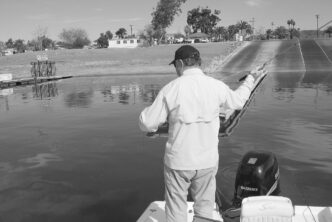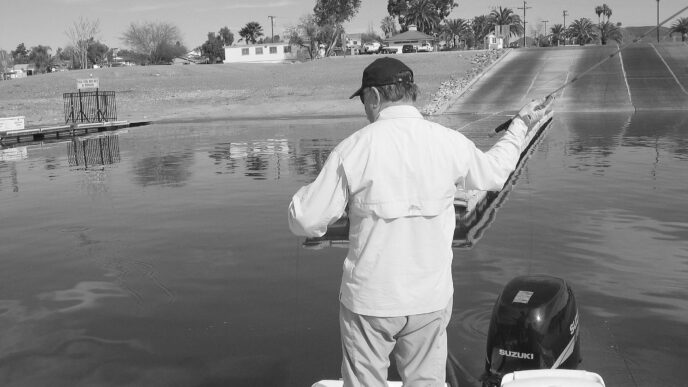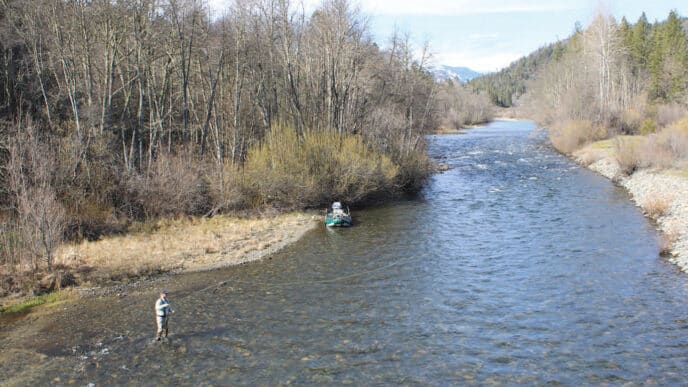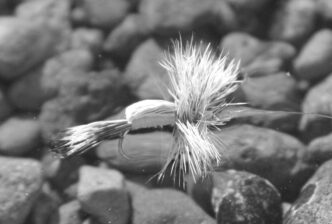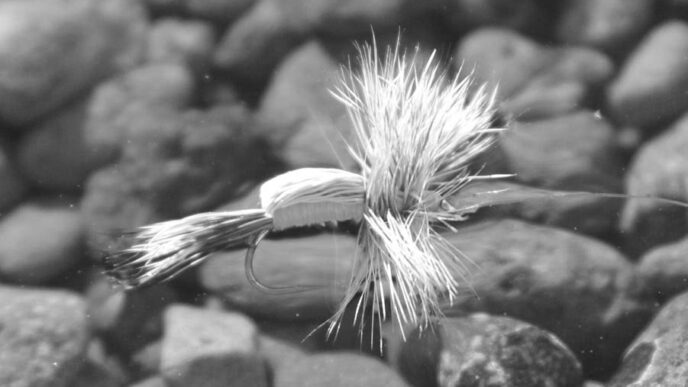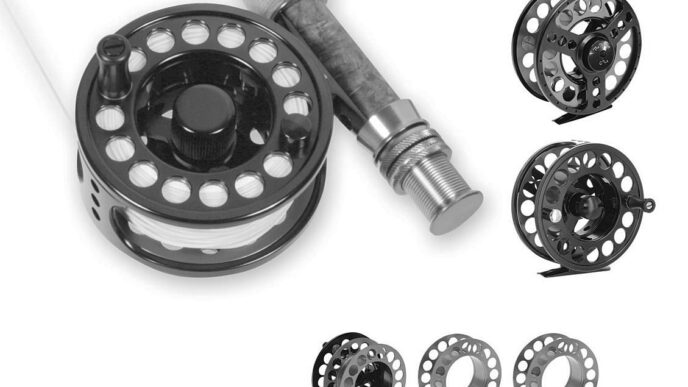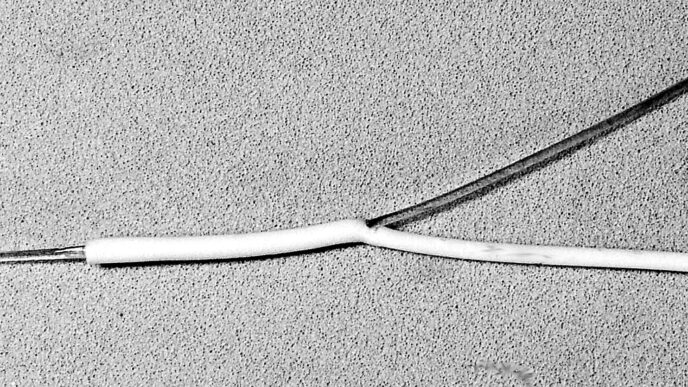Lincoln Gray, a big man with an infectious smile, has been a familiar face in the fly-fishing industry for a long time. I met him some years ago, a week in advance of the oncoming trout opener, at a spring “expo” at the fly shop where I work part-time. We laughed, traded barbs, and talked of guiding, trout fishing in rivers and still waters, flies simple and fancy, hooks, the industry and its future, travelling far and wide in search of that elusive trophy we all covet, smooth-running reels, and casting rods with tips that travel straight and true. Since then, our paths have crossed in shops, at fishing venues, and at shows. Most recently, at my request, Lincoln presented an enlightening, well-received program to my fly-fishing club on techniques and tactics for stillwater fishing during the amazing Hexagenia limbata mayfly hatch — a subject near and dear to my angling psyche. While the venue he selected was Lake Almanor, the knowledge he imparted easily transfers to any body of water — moving or still — where that huge, graceful, pale-yellow insect is found.
Lincoln has been fly fishing for over 35 years, an odyssey that began in his early years with trips with his father and his brother Lance to the legendary Rogue River in southern Oregon in pursuit of silvery steelhead returning from their sojourn in the Pacific Ocean. In the ensuing years, Lincoln paid his dues and earned his stripes on the Feather and lower Sacramento Rivers, Lake Almanor, and other venerable fly-fishing destinations. Currently, Lincoln lives with his family in Chico, California, where he works as a manager for Sierra Stream & Mountain, a company that includes the Sierra Stream Fly Shop, TieFast Tools, and J. Fair Eagle Fly Fishing. He also runs his own business, Stillwater Fly Fishing Adventures, through which he provides fly-fishing instruction, classes, and clinics and guiding services. Lincoln is also a well-known fly designer — his Hexagenia limbata patterns have been featured in California Fly Fisher and in Fly Tyer magazine. You can visit Lincoln’s website at www.stillwaterflyfishingadventures.com.
This past summer, I had the good fortune to experience the efficacy of Lincoln’s Hexagenia Stillborn, one of his signature patterns. Sitting in my float tube at one of my favorite stillwater venues a few hours before dark, awaiting the Hexagenia emergence, I watched enthralled as the drama began to unfold on the watery stage stretched out before me: the telltale tiny swirl in the surface film, the sudden appearance of a fully formed adult in the swirl’s dissipating rings, the left-behind shuck like a wraith floating aimlessly away, the phenomenon repeating itself in staccato fashion all around me. Like my companions, I spent that first evening heaving large emerger and adult imitations into the rise rings of the enormous, gorging trout patrolling the hatch. To my amazement, we managed to land only two or three fish apiece, despite the large number of trout slurping at the lake’s surface.
The next evening, following my usual contrarian approach, I wandered off to a different lake, abandoned the emergers and adults, grabbed one of Lincoln’s Hexagenia Stillborn flies that I had tied some weeks earlier, and tossed it into the ring of a hefty trout’s rise. The beast smashed the fly on the drop, as did a large number of its comrades — and it didn’t matter whether I just let the fly sit still or stripped it back. They were all over it like a cheap suit, while my friend Keith watched from shore. When I could no longer see, I found my way back to my truck with a headlamp (it’s a good idea to pack one, or a flashflight, when fishing the Hex hatch), and returned to camp at the original lake where we all had been fishing. Over dinner, I learned that my companions had stayed with adult and emerger patterns and had again landed just a few fish. When asked, I revealed my evening’s whereabouts, and when it came to the inevitable “Well, how did you do?” I winked at Keith and said, “Ask him,” thereby deftly avoiding the threat of flying mashed potatoes and overcooked carrots. In a ceremony vaguely reminiscent of the ritual of the Catholic tradition in which I was raised, I distributed my remaining hoard of Hexagenia Stillborn flies to my companions, since I had to leave for other adventures farther north that evening. I heard later that they put them to good use. Now let’s hear from Lincoln regarding how this very effective bug came to be and how to put one together.
“The Hexagenia Stillborn was developed for one reason only: to catch more fish on Lake Almanor. Over many years of guiding and instructing students in my schools, it occurred to me that I might be missing an aspect of the Hexagenia limbata mayfly hatch that had the potential to raise catch rates significantly — the stillborn form of this insect. As I began to investigate this possibility, I saw what appeared to be many unopened or just barely opened shucks on the water. A closer look revealed that inside the floating exoskeletons were fully formed, but dead adults that were for some reason unable to wiggle free of the case The light bulb went off in my head: while cripple patterns, paracripples, duns, and nymphs are the flies du jour for the Hex hatch, they don’t always work. Why not cobble up a fly that lies in or just below the surface film to imitate the stillborn form?
“I spent the next seven years designing and testing various patterns that resembled Hexagenia stillborns. The pattern featured here is not the original design. In fact, the original version was, to be blunt, not worth sharing with anyone. After many mutations of the pattern, I finally settled on the one featured here. Most of the interim designs sported an elk hair wing case, a style that I still fish today. That version sits lower in the surface film than the foam version. This can be crucial at times, especially when the water’s surface in the evening is flat and calm. In my experience, when this situation exists, the elk hair version seems to work better for drawing strikes. Conversely, on windy evenings, when the water’s surface is stirred up or choppy, the version with the foam wing case seems to be more productive. I’m not sure why this might be the case, but hey, that’s fishing!
“My method for fishing both pattern styles is simple. I normally first tie on a cripple or paracripple pattern. I then tie a 14-to-16-inch piece of tippet material to the bend of that fly and tie on the Hexagenia Stillborn as my point fly. Once I have cast the rig, I let the flies sit for a moment or two and then give them a twitch, followed by another pause and then a strip. The cripple pattern serves as an indicator, which helps strike detection, since the stillborn imitation is very difficult to see on the water, especially at dusk or near dark.”
Materials List
Hook: Daiichi 1260, size 6 or 8
Thread: Yellow 140 denier flat nylon
Tail: Natural ostrich herl tips
Ribbing: Medium gold wire
Abdomen: Natural ostrich herl
Wing case: Yellow Loco Foam strip (for a natural alternative, use deer or elk hair dyed brown)
Thorax: Medium olive J. Fair Long Shuck Glimmer or olive Ice Dub
Tying Instructions
Step 1. Debarb the hook and cover the shank with thread. Tie in three long ostrich herls with the tips facing rearward to form the tail. The two outside herl tips should point outward. The remaining portion of the herls will be used to form the abdomen. The herl-tip tails should be tied in above the back of the hook barb and should approximate the shank in length.
Step 2. At the same spot, tie in a piece of medium gold wire, which will be used as ribbing and to protect the fragile ostrich herl abdomen. Move the thread to a point about a quarter of an inch behind the hook eye.
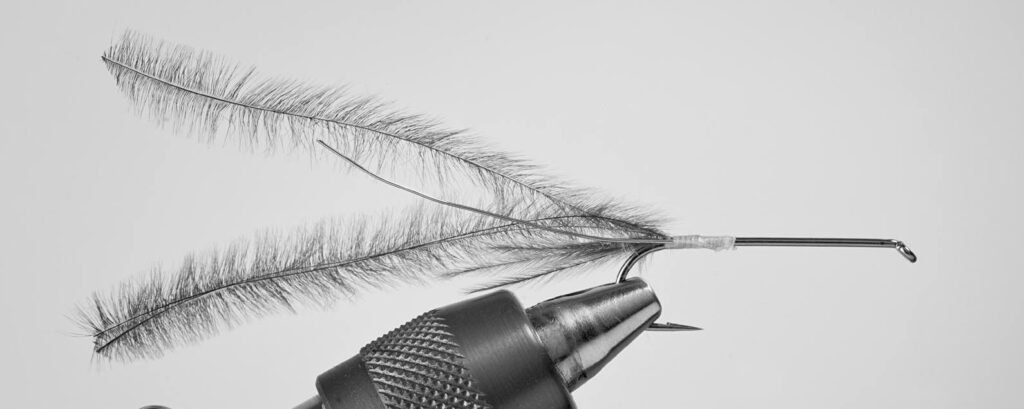
Step 3. Wrap the ostrich herls together forward toward the eye of the hook and tie them off about a quarter of an inch behind the eye. Leave the thread at that position.
Step 4. Wrap the gold wire ribbing forward through the ostrich herl in evenly spaced turns, segmenting the body. Tie the wire off at the forward end of the ostrich herl abdomen.
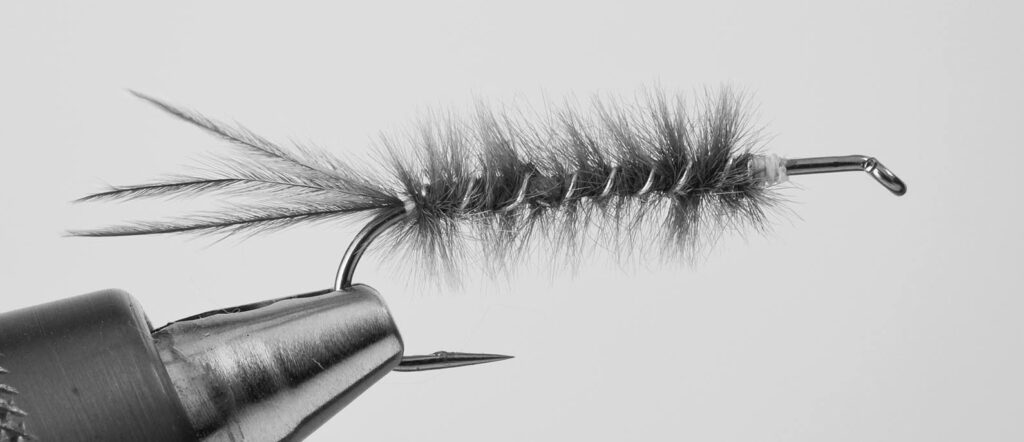
Step 5. Cut a strip of Loco Foam approximately one-quarter of an inch in width and one inch in length. Tie in the foam, shiny side down, behind the hook eye, working the thread slightly back onto the ostrich herl abdomen in order to avoid having a gap between the foam and the herl abdomen. The foam tab should be pointing rearward, because it will be pulled over the thorax to form the wing case. Move the thread forward to the hook eye. If using the hair version of the wing case, rather than the foam, tie the hair in by the tips, leaving the butt ends pointing to the rear.
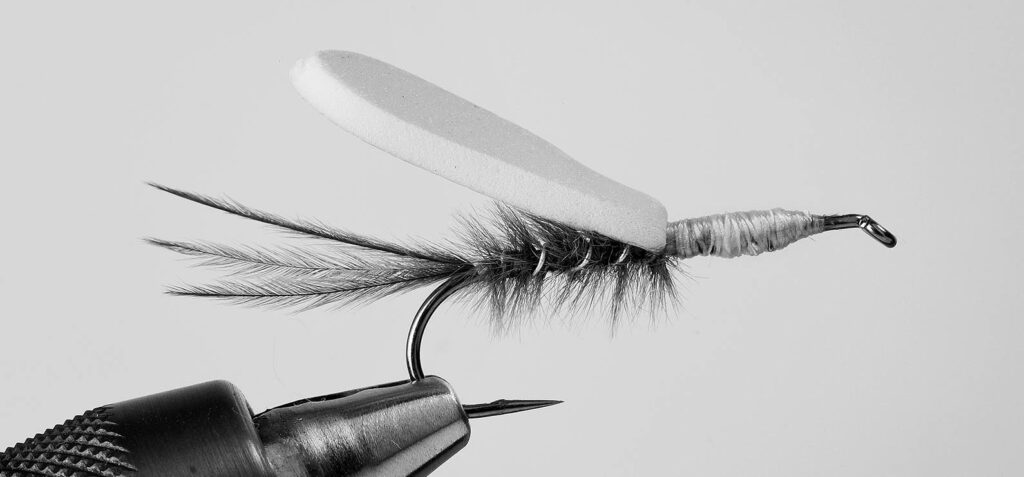
Step 6. Tie in a piece of J. Fair Long Shuck material just in front of the foam, working the thread rearward slightly onto the foam. Return the thread to the hook eye and wrap the Long Shuck forward to a point an eighth of an inch behind the hook eye to form a robust thorax. If you are using Ice Dub in lieu of Long Shuck, you will need to leave the thread on the foam, apply the dubbing to the thread, and then dub the thorax forward to the same point. Tie off the Long Shuck there and let the bobbin hang or just finish dubbing at that point.
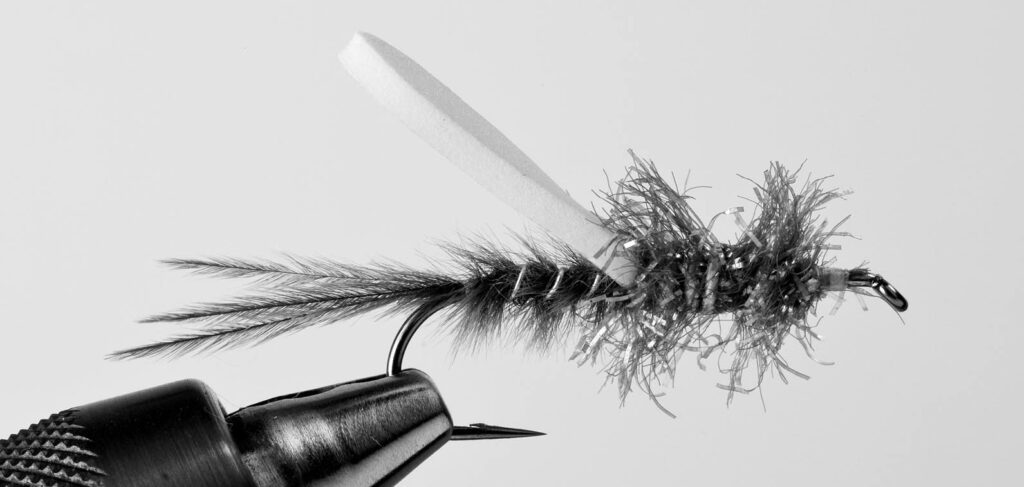
Step 7. Pull the foam or hair forward over the thorax and tie it off just behind the hook eye. The shiny side of the foam should now be on the top of the fly. Trim the foam tab or hair, leaving approximately a one-eighth-inch tab protruding out over the eye of the hook.

Step 8. Whip finish the fly over the foam or hair at the point where it was tied off and trim the thread. Apply a drop of super glue or head cement to the thread wraps. As mentioned above, unless the fish are clearly and consistently taking the adults on the surface, a good tactic is to fish the Hexagenia Stillborn in combination with an emerger pattern. Resist the temptation simply to tie on an adult. (Ed.’s note: see page 61 for a color image of the finished fly.)



